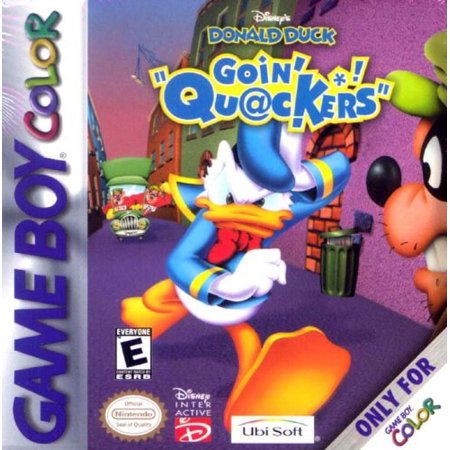
I am a Disney nerd, and I will jump at any opportunity to talk about one of their properties. There are also a lot of very good Disney video games. The 16-Bit era was rich with titles like Aladdin, The Lion King, and a slew of Mickey platformers. The Game Boy ports of those titles are a mixed bag, but I get excited about them all the same.
My wife and I were visiting Santa Fe and, as with everywhere we visit, I tracked down a local game store. We were welcomed by a friendly staff at 8-Bit Retro Games as I carried out my routine: checking out the whole store, admiring the retro games for consoles I don’t own, confirming I don’t have space at home for that really cool statue, and checking my wish list of games before circling back to the reason I actually came here: Game Boy.
I peered through the glass case at the front of the store, looking for Disney games, RPGs, and oddities. I snagged a copy of The Lion King* and I thought I was done. I mean, they had Tangled for DS but I wanted to read up on it a bit first. That’s when the manager brought out “The Binder”. This is what I was looking for. Its plastic pages housed many familiar titles: Home Alone, Home Alone 2, Toy Story, Toy Story 2 … you get the idea. There was one I hadn’t seen before: Donald Duck: Goin’ Quackers for the Game Boy Color. If you’re having trouble placing him, you may remember Donald as the lead in 2007’s Maui Mallard. I’m pretty sure he shows up in that Kingdom Hearts series as well.
Goin’ Quackers is an action platformer developed by Ubi Soft.** The game was released on a bunch of consoles including PlayStation 2 and GameCube. The Game Boy Color release is a little curious, though. Initially, it looked to be a port; however, the Wikipedia entry describes it as a different game altogether:
“A different game with the same title was released for the Game Boy Color, as well as on Game Boy Advance, the latter being given the title Donald Duck Advance.”
I couldn’t find anything further on the matter, so I guess I’ll just have to play the damn thing.
The first thing that stood out to me in GQ was how vibrant the colors are. I never owned a Game Boy Color until recently. I grew up on the monochromatic brick and I was grateful. It wasn’t until I got my hands on a Game Boy Advance that I had the opportunity to play GBC titles. That said, I didn’t play all that many of them because I was very invested in Pokémon Emerald and Golden Sun and the like. My point is this – I don’t know if all GBC-exclusive games are this beautiful to look at, or maybe I just forgot what the technology at the time was capable of. Technology moves so fast and we’re bombarded with graphical advancements every day. Still, this game is nice to look at.
Donald’s animations are pretty darn impressive. His movement throughout the game is full of the character you expect from this iconic duck, from his jaunty run while at full health to his grumpy stomp after taking a hit. When jumping, his hat lifts off his head a bit which he quickly grabs as his legs kick wildly in the air, and after beating a level (or boss) he takes off his cap and bows. Then there are the idle animations – those extra touches of detail that aren’t necessary but are charming and welcome. When on a rope or vine, Donald will look down, then straight at the camera and blink. When left standing on screen, he takes off his hat, scratches his head, then looks to the camera.
The plot is simple: Daisy, a reporter for the DuckBurg Times, has been kidnapped by Merlock, an evil wizard.**** Donald calls Gyro, who just happened to have nearly completed his teleportation device! Merlock catches wind of the rescue attempt and steals the blueprints Gyro needs to complete his invention. In order to reach Daisy, Donald has to help Gyro finish his device and be transported to the powerful magician’s doorstep. And so the journey begins.
You start by running through a forest, collecting blue discs, other blue objects, and blueprints (one per level) if you can find them. Donald has a double jump ability that he can use to get around the environment and to retrieve especially hard-to-reach items.
There’s something I always forget about these older games: the game itself often doesn’t tell you about its mechanics. Goin’ Quackers didn’t tell me that collecting so many of those blue discs scored you an extra life. Or that there were blue orb things that give you a power-up to smash through otherwise impenetrable doors. Or that the B-button serves a unique function with that power-up: jumping in the air, hold B to do a butt-drop through a barrier on the ground. (The B-button serves no other purpose in the game as far as I can tell.) Modern games will have a tutorial stage, or at least a text box indicating what button to push to execute an action. (On the GameCube release of Goin’ Quackers, Gyro interrupts gameplay to give you such tips.) On The NES or the GameBoy, all such instructions were found in the instruction manual. Go figure! Space was limited on those little cartridges, so why fill it up with information that you could just print in a booklet.***** When buying these games used, many years after their release, there probably isn’t a box, let alone a booklet. Sometimes I can find a PDF of the manual online and eBay is often rife with sellers of such miscellany. I’m going cold turkey with this one, though. Or should it be cold duck?
Other than occasionally not knowing what button to hit, gameplay is simple and accessible. The early stages aren’t terribly hard, but collecting all those blueprints adds a nice challenge. I found myself racking up lives pretty quickly – which I really needed later on!
The game does not have a save-battery, instead implementing a passcode system. The code you get between levels allows you to continue where you left off while preserving the lives you earned up to that point. Your (coins/orbs/whatever those things are) don’t get saved. They are, however, plentiful, so it’s not much of a loss if you need a break.
I noticed the difficulty start to ramp up by the time I was jumping around DuckBerg’s rooftops and getting chased by a helicopter doing its best impression of the Angry Sun in Mario 3. This was also where I got stuck and realized I had to do one of those power-butt-drops through a window to progress.****** This was also around the time I realized there were specific blue items that needed to be collected to make platforms appear in order to continue through the level. Even if I knew all those things, I still probably would have lost all those lives I did. The maps become a bit more complex and the enemies are more persistent.
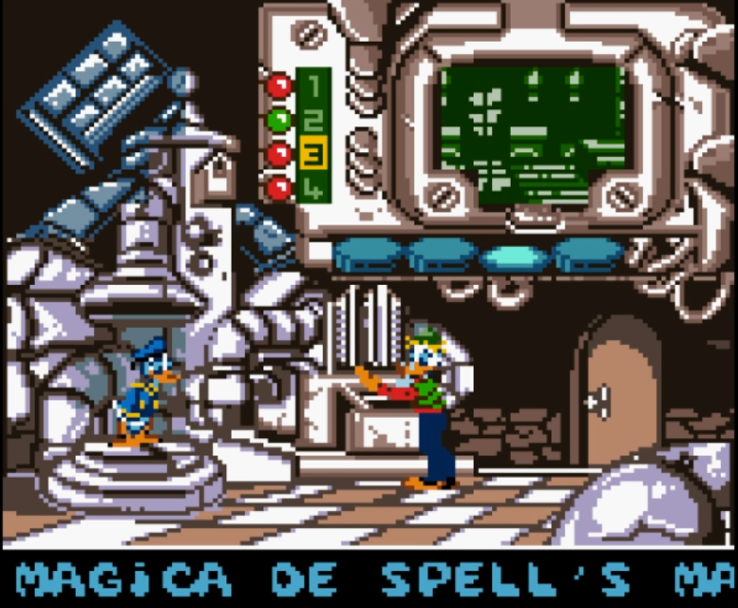
I showed up at the haunted manor stage thinking it was the wizard’s manor, thus I mistakenly thought these would be the final stages of the game. It’s not Merlock’s manor, as I originally thought. See, each stage opens with a “cut scene” of Gyro transporting Donald to his next destination. The title of the world/stage scrolls across the bottom of the screen. Between the scroll speed and how short the “cut scenes” are, there’s almost no hope of reading what it says. Thanks to a little captured footage, I discovered it reads “Magica de Spell’s Manor Level: Whatever.” In any case, the manor looks really cool. It’s full of hopping skulls, spike pits, and flames while maintaining a cartoonish charm. It totally has that Disney haunted house vibe and I love it. Also, this level is hard.*******
It was a fun surprise during one of the mansion levels when Donald exits one door only to find he has re entered the same room but upside down! It’s got some serious Kingdom Hearts Wonderland vibes.
The music is pleasant enough albeit repetitive. I’ve found myself listening to other things (YouTube, podcasts, etc.) because this soundtrack isn’t really doing too much to enhance the experience. Again, not bad, especially for the system. It’s peppy with a jazzy vibe, and those haunted mansion jams make me pretty happy.
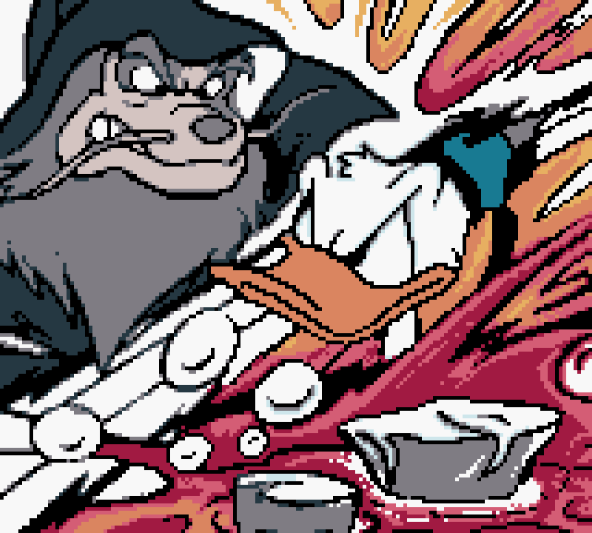
Turns out the manor was the penultimate location. I defeated a De Spell, like, three different times and the next thing I knew, I was in a jungle. I was getting pretty tired of the game by this point. The jungle leads to Merlock’s Temple where there is lava and spikes and some really fun platforming. I still think they could have dropped a stage or two.
While the game certainly ramps up in difficulty in the later stages, it never feels unfair. I thought I’d had it when I lost my last life in the Merlock’s Temple. I had made so much progress in the level and when I selected continue, I was all the way back at the beginning. Thankfully, I had learned the patterns of the level and I was able to make it back to where I was with relative ease – a handful of lives intact, even! A good platformer should be balanced that way, challenging enough that it’s tough to get through on the first… or second… or third try, but it teaches you how to progress. Donald doesn’t get permanent power-ups throughout the game, (just those temporary door-busters) but you as the player get better and that is a feeling of satisfaction I miss in a lot of modern games.********
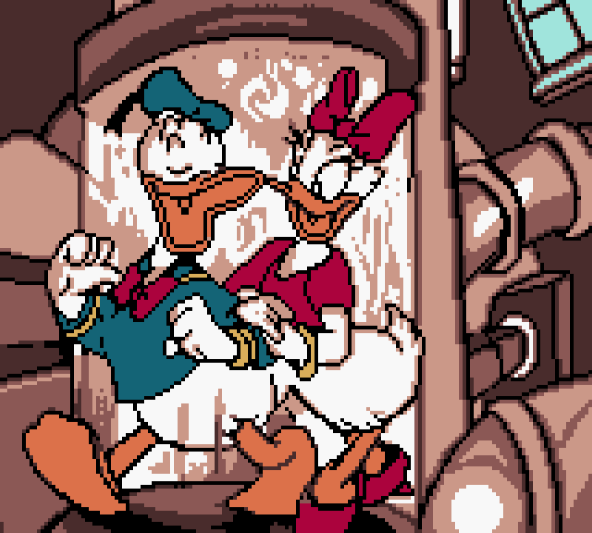
I’ve always liked Donald Duck, which makes this game all the better for me. It’s a fun, colorful, new-to-me experience I didn’t know I needed. It runs beautifully on the GBC, which is something, considering so many ports run slow or choppy on the system. I suppose the fact that this isn’t a direct port is a significant factor in how well it runs. The console versions of Goin’ Quackers drop Donald into a 3D world for a Disney-branded Spyro-like experience. The GBC “port” places the same story in a side-scrolling action platformer that perfectly suits the system and provides a unique entry in a library of games riddled with poor adaptations. I hope to stumble upon more treasures like this. If you have any recommendations, please let me know!
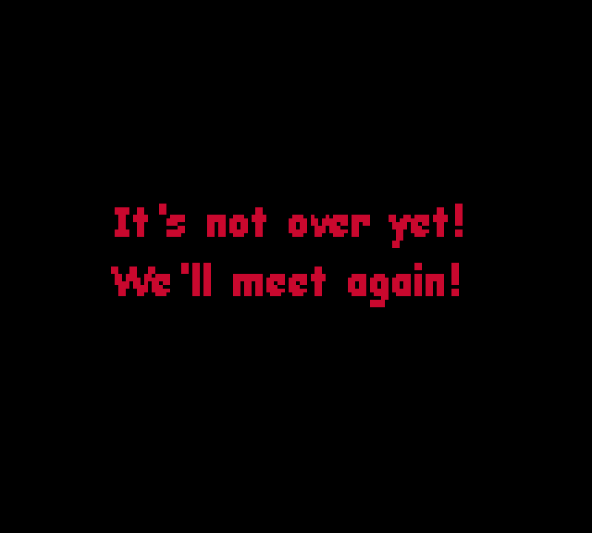
* Write-up coming soon. (Back)
** I’m currently enjoying Ubisoft’s Starlink: Battle For Atlas on the Nintendo Switch. I’m not going to write about it here because, despite playing the game exclusively in handheld mode, the Switch isn’t a dedicated portable console.***
*** That’s a rule I’m bound to break. (Back up)
**** As evil wizards are wont to do. (Up you go)
***** I loved flipping through booklets. (Just a few more)
****** I had to consult a YouTube longplay to figure out that butt-drop thing.
******* I might have to consult YouTube again for strategy. (Never mind, I got through it.) (I thought it would be unique)
******** One notable exception in particular is Hollow Knight. By all accounts, Celeste should also be mentioned here though I’ve yet to play it. (I know…) (But programming all these jumps is time consuming)










